Vikramjeet Sandhu
History 106 98A
July 9, 2018
Assignment 2: The Oil We Eat Blog
Welcome to my blog posting for Assignment 2, where I kept track of my food intake for 24 hours. I will be giving an in-depth analysis while looking at each food or drink I had throughout the day that takes into consideration the production of the main ingredients, the packaging process and transportation. There will be a consideration of the large role that fossil fuels play in society today and is often overlooked from our daily activity of consuming food. I will also explain where and if these food ingredients were imported from places outside of locally. There are certain areas where details will be of reasonable speculation based on common knowledge and direct sources!
I do most of my food grocery shopping at the nearby Safeway, so the products will be from there but most stores in Vancouver have similar items stocked. When examining manufacturing facilities for these ingredients or even plastic containers, I’d like to mention that especially in North America it is uncommon to use fossil fuels in machineries or conveyer belts. However, it needs to be taken into consideration that back up diesel-power generators or fuel air pumps may be used along with transporting vehicles such as forklifts. Additionally, the specifics of where the plastic or foam containers are purchased from vary in each company with less specificities given. There are plants that produce these artificial containers domestically in many provinces and states such as the famous Dow Chemical Company in the USA. Many companies purchase these from the considerably cheaper Asian markets, most notably China. Nonetheless, the fossil fuel use is evident in both situation as transportation of these items through ships and/or trucks still requires large amounts of fuel.
Another aspect to consider is the agricultural industry that has become commercialized over the last several decades is a major cause of high fossil fuel use. All foods we examine in this blog use tractors we are all familiar with and many use larger machineries specific to it that will be discussed in detail. The use of fossil fuels is accounted for in the food we consume on the daily through agriculture infrastructures of planting, harvesting, irrigation and drainage.
Lastly, globalization and increase in import/exports globally has been done through large vessel ships and local transportation through commercial trucking. The trucking business is a large industry that we see as results from the large interconnected highways in North America and throughout the world. Many of these processes are similar to one another such as movement of materials from a third party such as plastic containers and may become repetitive, to eventually be assumed by the readers.
Food Blog of the Day
In this Blog, I will be classifying if the food/drink I consumed was imported, packaged and the major roles of fuel by the time I brought the product home.
Breakfast
Curry and Companies: Fresh Blueberries
- Imported: Yes, from Oregon
- Packaging: Yes, in a clear plastic container
- Role of fuel: production, packaging, transporting
- Food Production: berry trees planted through the aid of tractors. Harvesting, some berries that are hand-picked, but most commercial farming use large machines that remove automatically. Both tractors and this machine use large amounts of fossil fuels that can range from petroleum, diesel and propane.
- Packaging: These berries specifically came in clear clamshell containers, that are usually purchased from a third company that can use fossil-fuel machinery. However, most of these plastics making companies use power grids that rely on heavy use of electric energy which point to a large carbon footprint.
- Transportation: Although, we may not be able to specifically say if Curry and Companies uses an American company or Asian they still use fossil fuels to import these containers via ship or truck to reach their facilities. The transportation of these blueberries once ready to sell also uses fossil fuels via truck across the USA and Canada to grocers such as Safeway.

https://www.youtube.com/watch?v=nFFll3JuBLE&feature=youtu.be
This link above is a video that explains the exact production of blueberries that is a great example of how commercialized farming is done today!
Cliff: Chocolate Chip Flavoured Energy Bar
- Imported: Yes, from Emeryville in California
- Packaging: Yes, in a non-clear wrapper
- Role of fuel: production of all ingredients and packaging, transportation
- Food Production: will be analyzing the two main ingredients that Cliff Energy Bars use across all flavours, rolled oats and cane syrup.
- Cane syrup: lengthy process in which plays a large role. Sugar canes just like blueberries mentioned above use large machinery to be planted and harvested. Eventually are transported to sugar mills via trucks to crush canes through oil-fueled machine to separate the juice.
- Oats: key ingredient that is common in food we consume every day like cereal and bread, third largest crop in the US along with wheat and corn. Similarly, this is mass grown and is heavily mechanicalized process that includes all stages including planting, irrigation and harvesting.
- Packaging: Similar to most companies, it would be safe to assume a multi-national company such as Cliff uses a third party to deliver the plastic wrapping and packaging that has its own use of fossil fuels as mentioned above.
- Transportation: the movement of all material (finished or not) that includes from farms, milling facilities and then to Cliff manufacturing in Emeryville. Lastly, the finished product is sent across the world to customers via truck or ships that use fossil fuels.
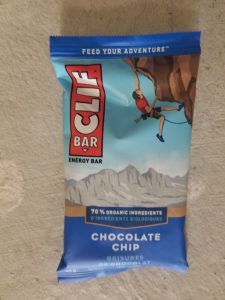
https://www.youtube.com/watch?v=EP_fgp7zYKk
This link above is an explanation of cane sugar is made but also gives great detail of cane syrup in the process!
Simply: 100% Orange Juice
- Imported: Yes, oranges from Florida and then to manufacturing plants like Ontario
- Packaging: Yes, in clear plastic bottle
- Role: orange farming process, transporting of all material
- Food production: the main ingredient of oranges, Simply brings in from Florida due to its ideal weather to grow in cool winters and warm winters. The use of tractors to plant these oranges once ripe use machinery to harvest them. Tractor shake are used in small-scale farms but large farms such as those that supply to Simply use large machines that are called the canopy shakers. This uses large amounts of fossil fuels in the harvesting process.
- These manufacturing plants that use deaeration methods do not use fuel directly in their machines to produce the juice like similar plants we have discussed.
- Packaging: use plastic bottles similar to another product we discuss later in-depth. This is also from a third party but still adds to the impact of fossil fuels on the overall process.
- Transportation: the movement of oranges from oranges from the farms to plants such as the one in Ontario require trucks. Eventually, once bottled sent to retailers through the same method as well, using fossil fuels for the shipment.
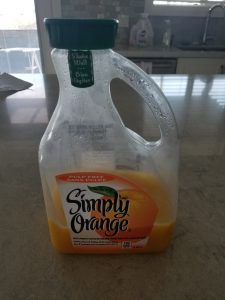
Lunch/Snacks
McDonald’s Coffee
- Imported: Yes, these coffee beans are from suppliers in Brazil, Columbia and Guatemala
- Packaged: Polystyrene plastic lids and foam cups
- Role of Fuel: bean production, transportation, packaging.
- Drink Production: Arabica beans planted mostly by hand, hence why these regions are ideal because of cheap labour. However, machinery is used to harvest, and machine dry these through diesel-consuming pulping machines.
- Once, fermented in water large mechanical stirrers that also run on fuel are used for the hulling and polishing process
- Packaging: similar to other products, third party
- Transportation: the use of fossil fuels is very significant here as they are exported onto ships and delivered via trucks to McDonald’s stores globally.
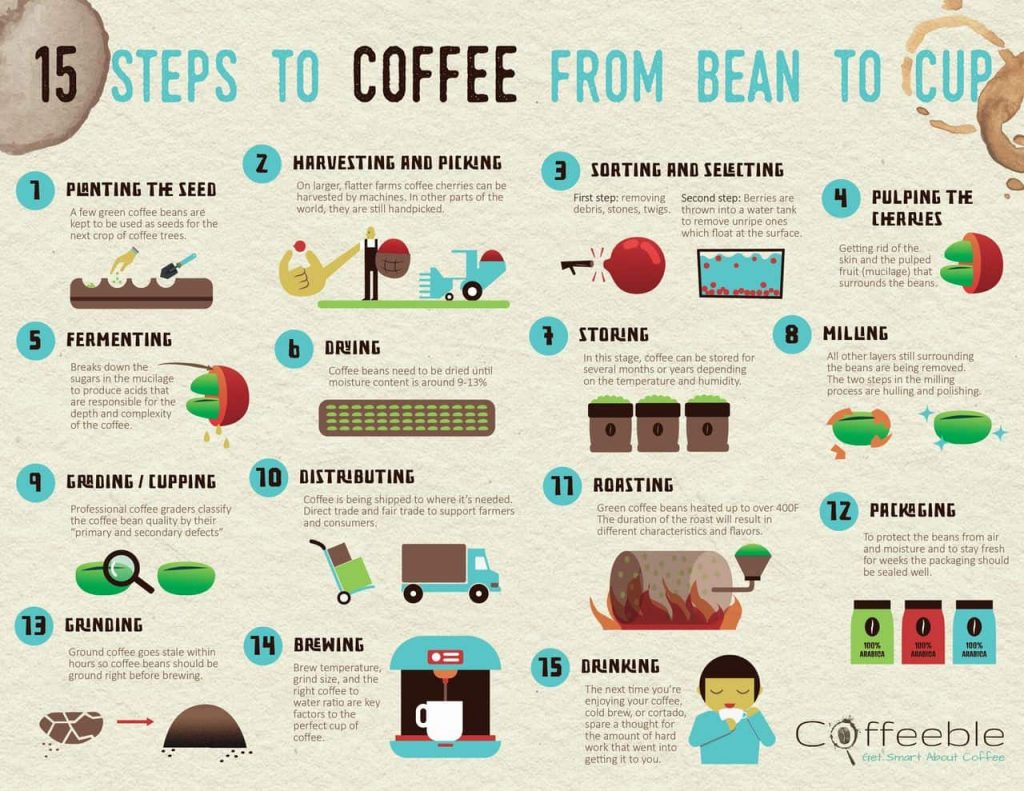
I found this picture very interesting as it gives the start to finish process of Coffee that we don’t think of! Unfortunately, I threw out my coffee cup at the library before I got a chance to take a picture of it. Regular brown coffee cup as below! 
Fresh Produce: Banana
- Imported: Yes, from Guatemala
- Packaging: None
- Role of oil: Farming and Transportation
- Food production: grown in Guatemala similar to coffee beans as labour intensive and includes cheap labour. However, tractors still used in planting minimally
- Packaging: No packaging to the customer as they are naturally grouped in bunches in fresh produce aisle
- Transportation: Although, bananas do not require high quantities of fossil fuels in the farming process, they require the opposite for transport. As these are imported from Latin America they require refrigerated ships that ensure freshness. These are called reefers that can be powered by diesel generators that add to the fuel consumption. Eventually, they are transported from ports via trucks to your local grocery store.
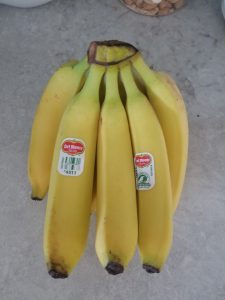
Country Golden Yolks: Free Ranged Brown Eggs (Boiled)
- Imported: No, from local farm in Fraser Valley
- Packaged: Polystyrene foam egg container
- Role of oil: animal feed, transportation, packaging
- Food production: Use certified feeds that are explained in-depth for another poultry product that was also Canadian bred
- Packaging: Polystyrene foam similar to other foods I ate today, produced in a third company which has its own fossil fuel footprint as mentioned previously.
- Transpiration: the lowest use of fossil fuels compared to other foods I ate today, as it is a local product with minimal fuel needed. Only in obtaining the packaging cartons
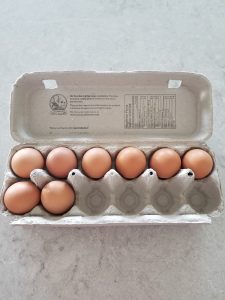
Fresh Produce: Orange
- Imported: Yes, from California
- Packaging: None
- Role of oil: Farming and Transportation
- Food production: grown in California, that is identical to the Orange Juice I consumed earlier just in a different region with machinery
- Packaging: No packaging to the customer as they are in fresh produce aisle
- Transportation: Again, large consumption of fossil fuels in this situation was the transportation of the oranges via trucks from California to grocer like Safeway
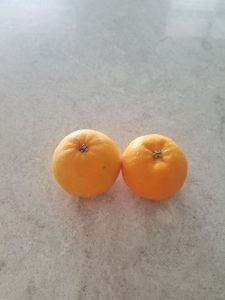
Dinner
Safeway’s Boneless and Skinless Uncooked Chicken Breast
- Imported: Yes, within Canada
- Packaging: Polystyrene foam packaging with clear plastic wrapping on top
- Role of fuel: animal feed, transportation and packaging
- Food production: the food feed given to the chicken butchered are the link to high amount of fossil fuels associated. Standardized by Canada Feeds Act, majority of grain fed includes wheat, corn and oats that results in high fuel usage associated.
- Similar to oats we mentioned earlier, corn and wheat is mass produced is heavily dependent on fertilizers and mechanization to grow in the greatest efficacy for the lowest costs. These grains do not rely much on labour; hence machinery consumes most of the production and growing process. Seed planting, germination, irrigation and harvesting is essential to the production and require high levels of fossil fuels. Tractors in planting and large machines used in harvesting techniques of combining and cultivation all use diesel and petroleum gas to function.
- Packaging: The Polystyrene we reasonably speculate a large company such as Safeway produces from a third company like the rest using fuels to be delivered
- Transportation: the delivery of the raw materials such as grain feed, packaging and eventually final product to stores requires trucks fuelled.
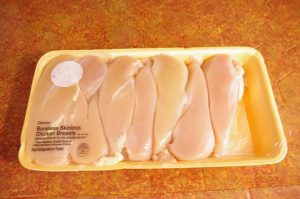
This picture above is not the actual packaging that was purchased by myself but is very similar to the one that I purchased. I had already thrown this packaging out unfortunately!
Green Giant Canada: Canned Corn
- Imported: Yes, from Mississauga
- Packaging: Yes, Aluminum Container
- Role of Oil: corn production, transportation, packaging
- Food Production: corn is one of the most grown plant in Canada due to its high demand in natural food, canned and corn syrup in everyday foods. Similar to the above grain feed, the harvested corn is transported to facilities to be stripped down and packaged.
- Conveyer belts and machinery (similar to plastic packaging) use predominately DC currents such as power grids. Although not direct fuel, these are still large amount of energy being consumed in the production.
- Packaging: the material of Aluminum is produced heavily in Canada (especially Quebec), so it would be right to speculate that the third party is relatively local. However, the process itself uses DC powered factories predominately to melt and mold the containers.
- Transportation: although, all of this is domestically grown and produced, it still requires feel to be transported to the manufacturing facilities and out to stores again.

https://www.youtube.com/watch?v=QT0_YBrloqI
This video gives an in-depth analysis of how canned corn is made exactly!
Diet Coke
- Imported: From Coca-Cola plants across the country, main in Toronto
- Packaging: Yes, clear 1L plastic bottle
- Fuel: transportation and packaging mostly
- Drink production: Diet Coke production is very unique as it does not include the common corn fructose syrup but aspartame. This is an artificial sweeter that is substance used to flavour food/drinks without calorie intake. This does not use fuels directly as it is done scientifically through fermentation and synthesis. Eventually being crystalized and then purified to powder form by ethanol solution, excluding fossil fuel use.
- The majority of sodas is carbonated water which is simply set up by machines adding CO2 to the purified water through filtration to get the desired pH levels, which also doesn’t include fossil fuels directly.
- Packaging: However, these plastic bottles are produced in factories that use automated mixers and electric energy to model these bottles. Through polymerization of polyethylene terephthalate (PET), modern facilities such as these commonly use power grid electricity not gas-powered
- Transportation: use trucks to ship to retailers across the country
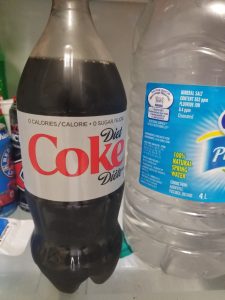
https://www.youtube.com/watch?v=ed7XJeXl3b4
The video link above is a great video of how plastic bottles are made! Applicable for both the Simply Orange Juice Container and this Diet Coke bottle above.
Interestingly, I have been able to confidently speculate some of the above information due to my good friend working in the Coca-Cola production plant in Richmond, BC. He was a great resource that informed me that plastic bottles do in fact come from a third party, ready to be filled with liquids. With further assistance, my friend informed me that the conveyer belts and machines run on a DC motor through electromagnetic methods similar to technology seen in elevators today. Coca-Cola being one of the most iconic and largest brand in the world, I felt it was right to speculate that these methods were similar to these other large companies. Although I didn’t directly consume the corn fructose syrup, I ensured I understood the connection it has in everyday food. As seen with the Cliff Bar use of cane syrup and the use of corn in foods consumed like eggs and chicken breast I gained a large understanding of why corn is so mass-produced. I try to consume as much food directly from the source, cook as much at home in order to stay in shape as an athlete. Items such as Diet Coke quite often a luxury, the core grains as seen in my food blog show the consumption of corn, wheat and oats in all foods despite being “healthier” or not.
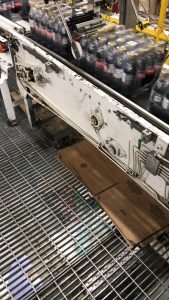
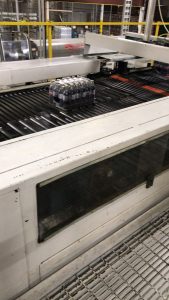
These pictures above are of the production plant of Coca-Cola in Richmond that my friend works at. It is very familiar with the other plants of the foods that I ate today in all aspects including packaging!
I read the article Crude Reality before beginning this assignment to ensure I could gain some context and understand these food productions better. The role that fossil fuels play in food we eat today is astonishing and I feel it is often overlooked. We generally look at cars and other luxuries as the main causes of fossil fuels misuse. However, we can see the development of modern economy as Rome (2018) mentions since the mid 1900s a result of the increases in oil consumption. Oil has become such a large component in our daily eating and has effects not only limited to food but indirectly like plastic and transportation. From my food blog I learned that transportation of these global products leaves a large trail of fuel through shipping and trucking.
I also gained a greater understanding that Rome (2018) mentions of cheap oil leading to cheap food having consequences seen today. The impact affordable energy has to encourage fertilization and mass mechanization of grains such as corn and wheat have built a further reliance on fossil fuels. This article and my understanding of our daily eating habits of how far consumers have distanced themselves from the production cycle. In fact, have caused further demand from items such as bananas from Guatemala that has led to these massive networks of transportation. These interstate and cross-country highways have altered the landscape of the modern country as we know it such as i-5 highway. The inclusion of corn, wheat and oats as a staple in most foods validates Adam Rome’s claims of petro-farming having no real end in sight. Use of fertilizers, mass machinery such as canopy shakers in the oranges I consumed point to an overreliance on fossil fuels that one may never think of.
Sources of Information: Below are links with description beneath that you may find of interest of the specific production of the food I had today!
- What McCafé regular coffee is made from
https://yourquestions.mcdonalds.ca/answer/what-plastics-make-up-your-coffee-cup-lids/
- What cup lids are made of
http://www.madehow.com/Volume-1/Expanded-Polystyrene-Foam-EPF.html
- How Polystyrene Foam and Plastic is made
https://www.blueberrycouncil.org/growing-blueberries/how-blueberries-grow/
- How blueberries are made
https://www.youtube.com/watch?v=nFFll3JuBLE&feature=youtu.be
- YouTube video of Blueberry Production
https://www.youtube.com/watch?v=i_tSPm14XtA
- Making of Blueberry Plastic Containers
- Cliff Manufacturing Plant Alterations
https://www.youtube.com/watch?v=EP_fgp7zYKk
- Great video on how cane sugar and the syrup is made
https://nutrineat.com/how-oats-are-processed
- How oats are made
https://www.coffeebeancorral.com/HowCoffeeIsMade.aspx
- How coffee is made, picture with long process is shown
https://www.safeway.ca/whats-in-store/meat-and-seafood/poultry
- Safeway Poultry Website
https://www.chickenfarmers.ca/what-chickens-eat/
- Canadian Chicken Farmers showing what chickens are fed
https://en.wikipedia.org/wiki/Dow_Chemical_Company
- Dow Chemical Company that makes all types of plastics and foams
https://en.wikipedia.org/wiki/Maize#Cultivation
- The cultivation of Maize: planting, harvesting and overall production
https://www.youtube.com/watch?v=QT0_YBrloqI
- Video of Canned Corn Production
http://www.madehow.com/Volume-2/Aluminum-Beverage-Can.html
- How Aluminum Cans are made
https://www.youtube.com/watch?v=V4TVDSWuR5E
- Video of how can is made
https://www.youtube.com/watch?v=k2WnGBHaLY4
- Carbonated Soda production
https://www.youtube.com/watch?v=ed7XJeXl3b4
- Video of how Plastic Bottles are made
http://www.madehow.com/Volume-1/Soda-Bottle.html
- How bottles are made
http://www.chemistryislife.com/the-chemistry-of-diet-coke
- How diet Coke is made
http://www.bananalink.org.uk/how-bananas-are-grown
- How bananas are grown
https://www.hunker.com/12003495/how-are-oranges-harvested
- How oranges are harvested